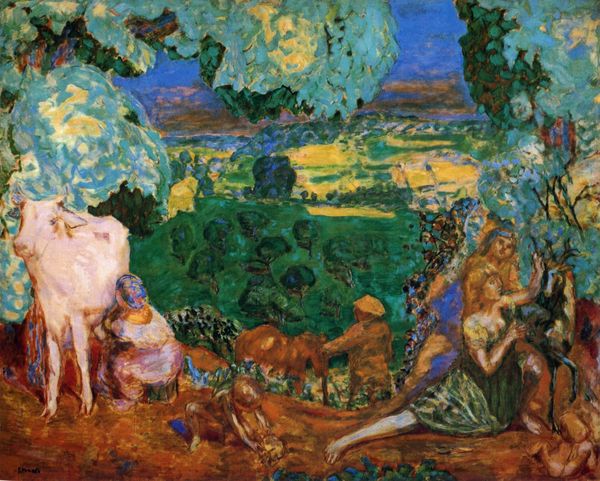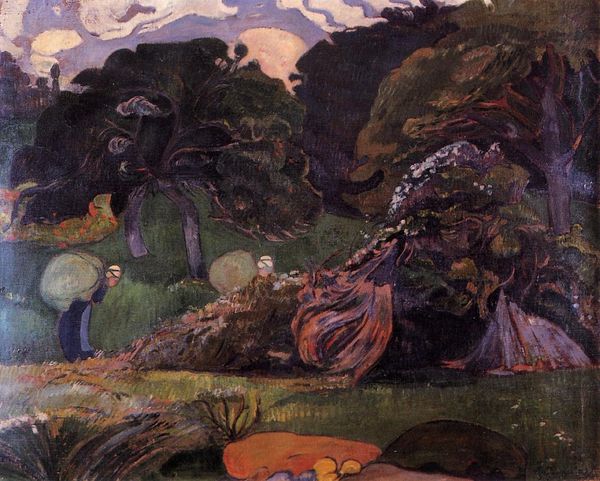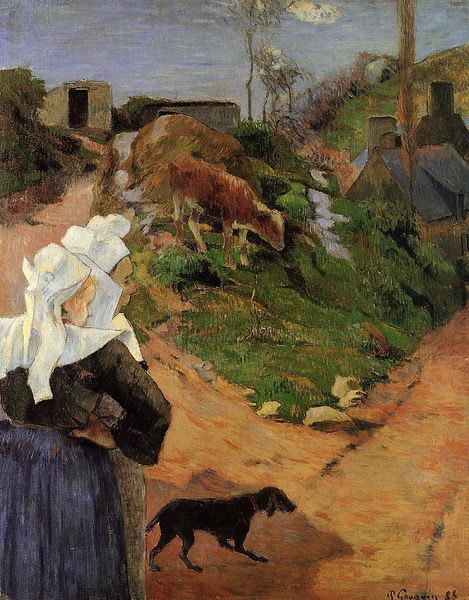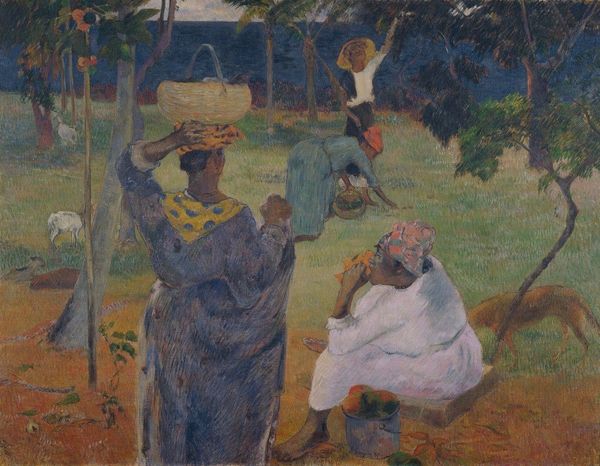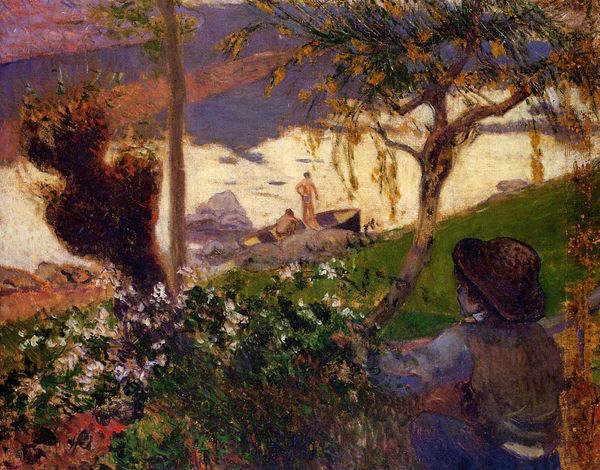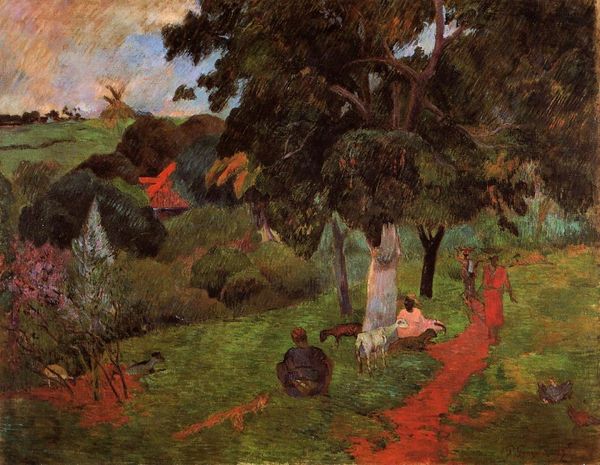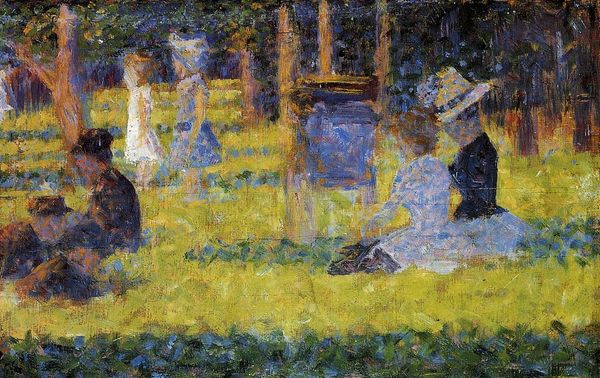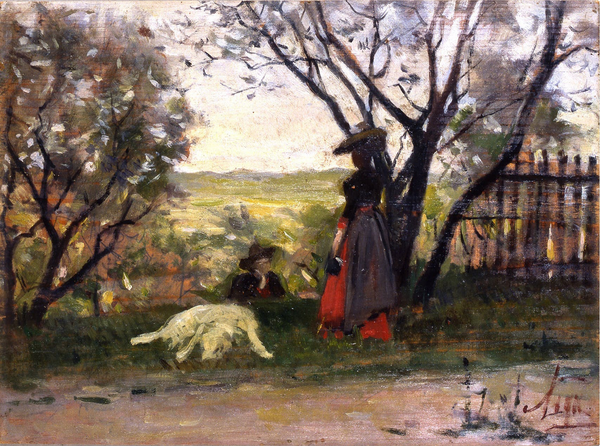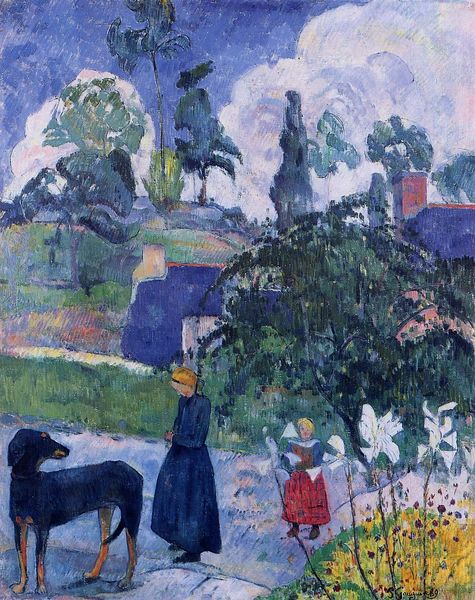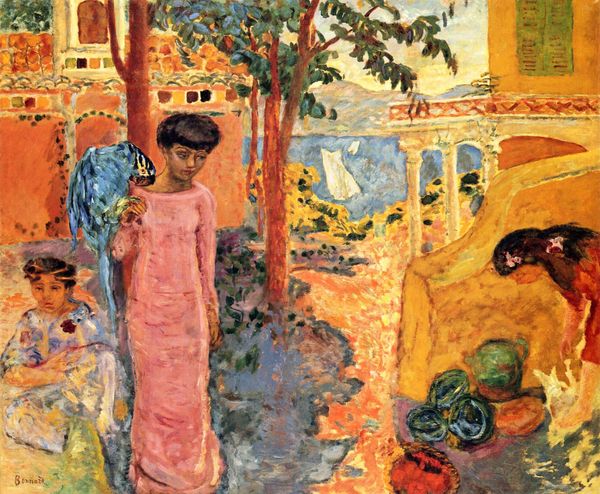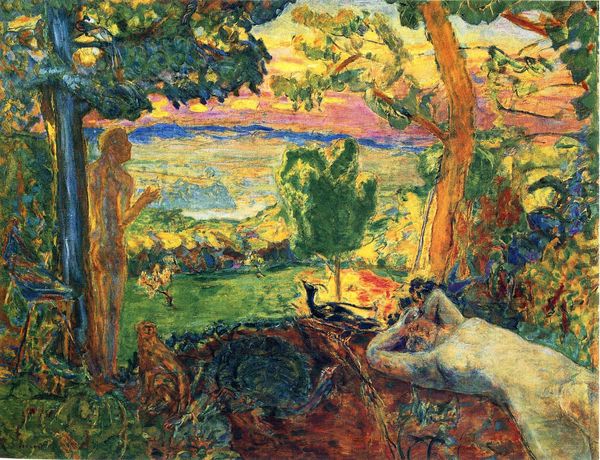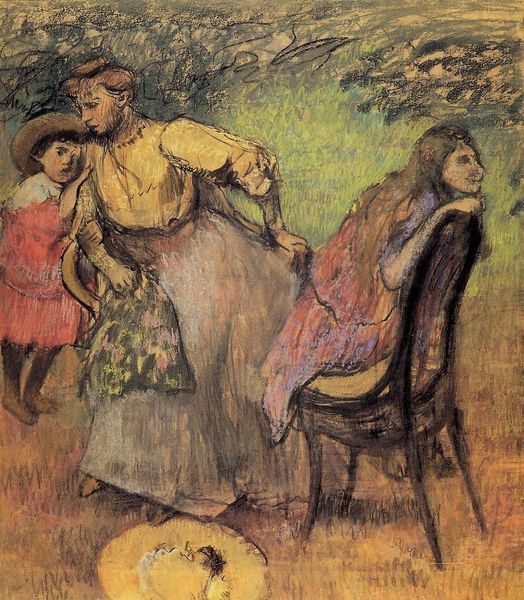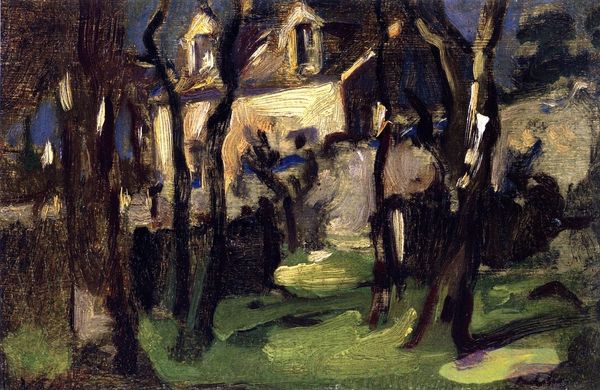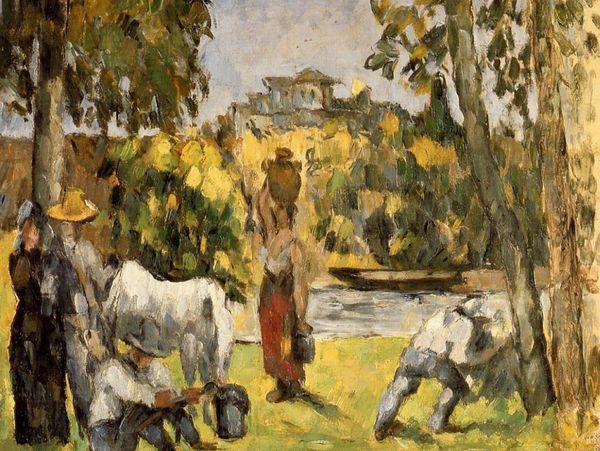
painting, oil-paint
#
narrative-art
#
painting
#
oil-paint
#
landscape
#
figuration
#
orientalism
#
symbolism
#
genre-painting
#
post-impressionism
#
mixed media
Dimensions: 61 x 76 cm
Copyright: Public domain
Editor: This is Paul Gauguin's "Tropical Conversation," painted in 1887 using oil paint. The vibrant colors and figures almost feel like a stage scene. I’m struck by the composition, it's quite different from typical landscapes. How do you interpret this work, considering the period in which it was created? Curator: Gauguin painted this after his trip to Panama, a formative experience. The title itself invites scrutiny: who is conversing, and about what? He presents a seemingly idyllic scene, but the placement of figures feels somewhat staged, pointing to the constructed nature of his "tropical" vision. The use of color is symbolic, divorced from naturalism, reflecting a post-impressionist aesthetic that sought to convey inner states and emotion, influencing later movements. Editor: So it’s not necessarily about accurately portraying a real place? Curator: Precisely. It's about constructing a vision of the exotic that was highly marketable to European audiences. Consider the power dynamics inherent in depicting other cultures – who gets to tell the story, and how does it get filtered? Does Gauguin's work romanticize, appropriate, or engage meaningfully with the Panamanian people and landscape? This piece exists within the complicated context of orientalism. Editor: That makes me look at it completely differently! I was initially drawn to the colours and the apparent simplicity, but it's much more layered than that. I never considered the politics of representation in that context. Curator: Exactly. And that awareness makes us think critically about what art tells us about ourselves and the societies in which art is both created and displayed.
Comments
No comments
Be the first to comment and join the conversation on the ultimate creative platform.
